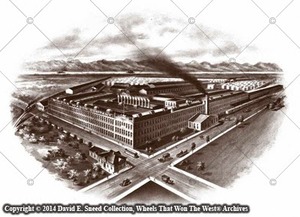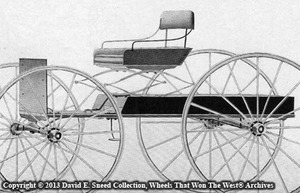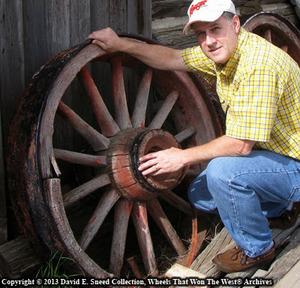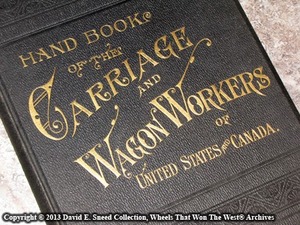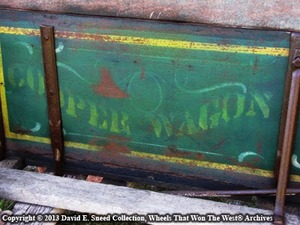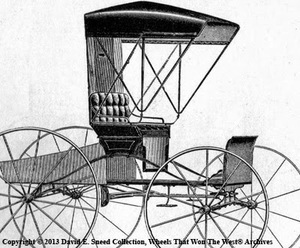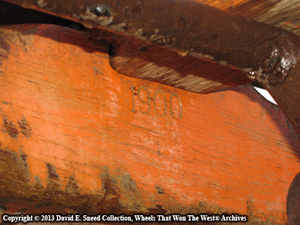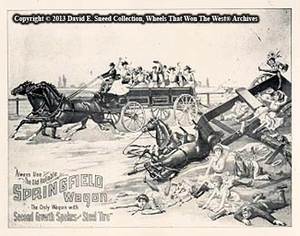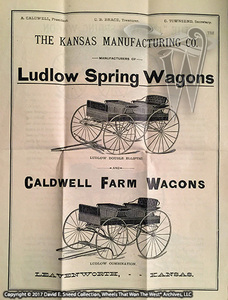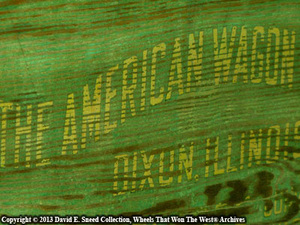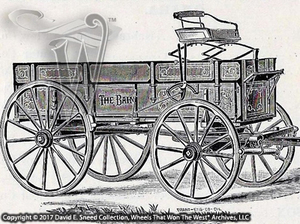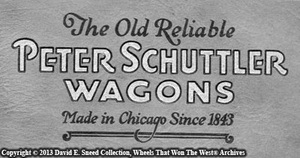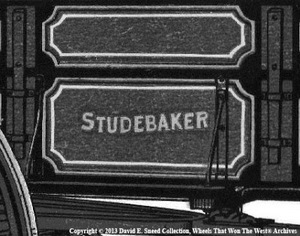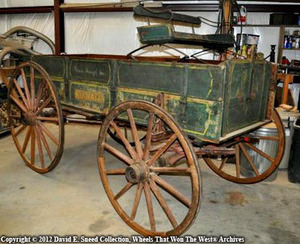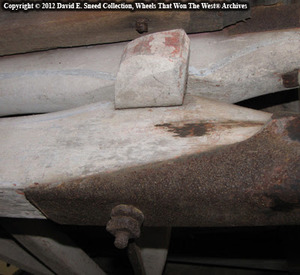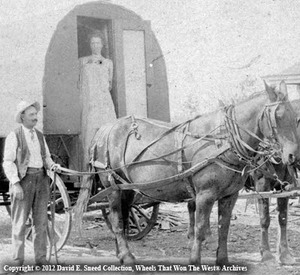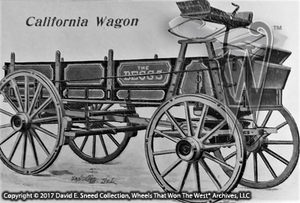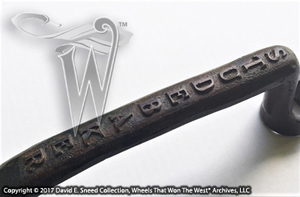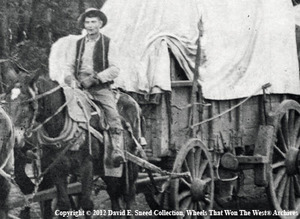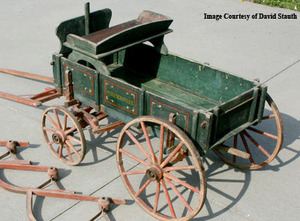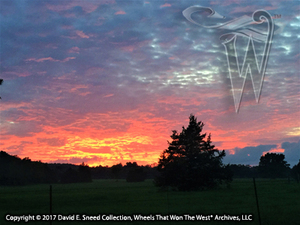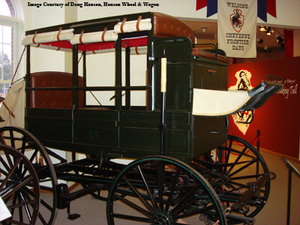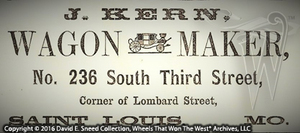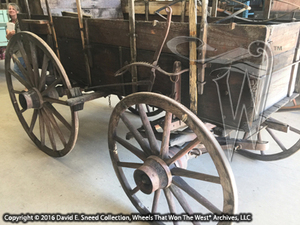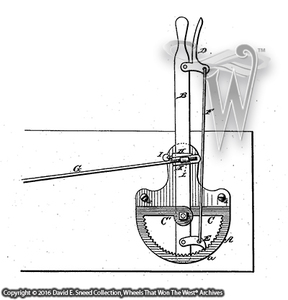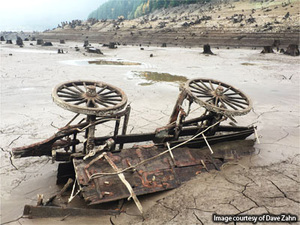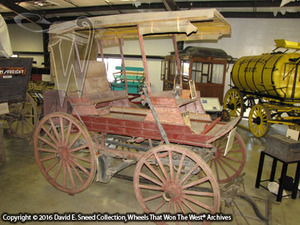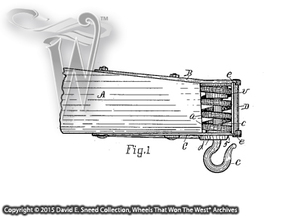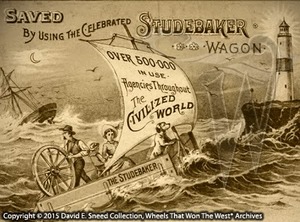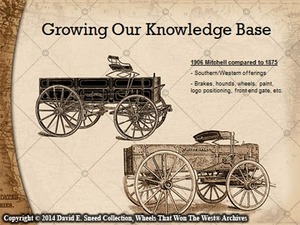Ultimately, when it comes to forensic studies on wagons and wagon history, the internet search engines aren’t going to find a lot out there. And you can forget about Ai (Artificial Intelligence) helping to bridge the gap. Why? Well, first off, very little supportable documentation has been written, at least in modern times, on many of these brands. That said, there are some good resources and I’ve written about many of them over the years.
Second, the vast majority of the paper materials from the 19thcentury wagon industry have not survived. Third, many specific materials that have survived are not digitized. As a result, they remain buried and unknown to most of the population. Fourth, there is no single comprehensive source for all vintage wagon makers. That includes modern day, internet search engines. Those very challenges are why we started the Wheels That Won The West® Archives decades ago. I was frustrated that it was so difficult to locate sufficient, reliable details on almost any question related to this industry. While the process has been slow, over the decades, we’ve assembled a mountain of primary source materials that will rival most any related repository.
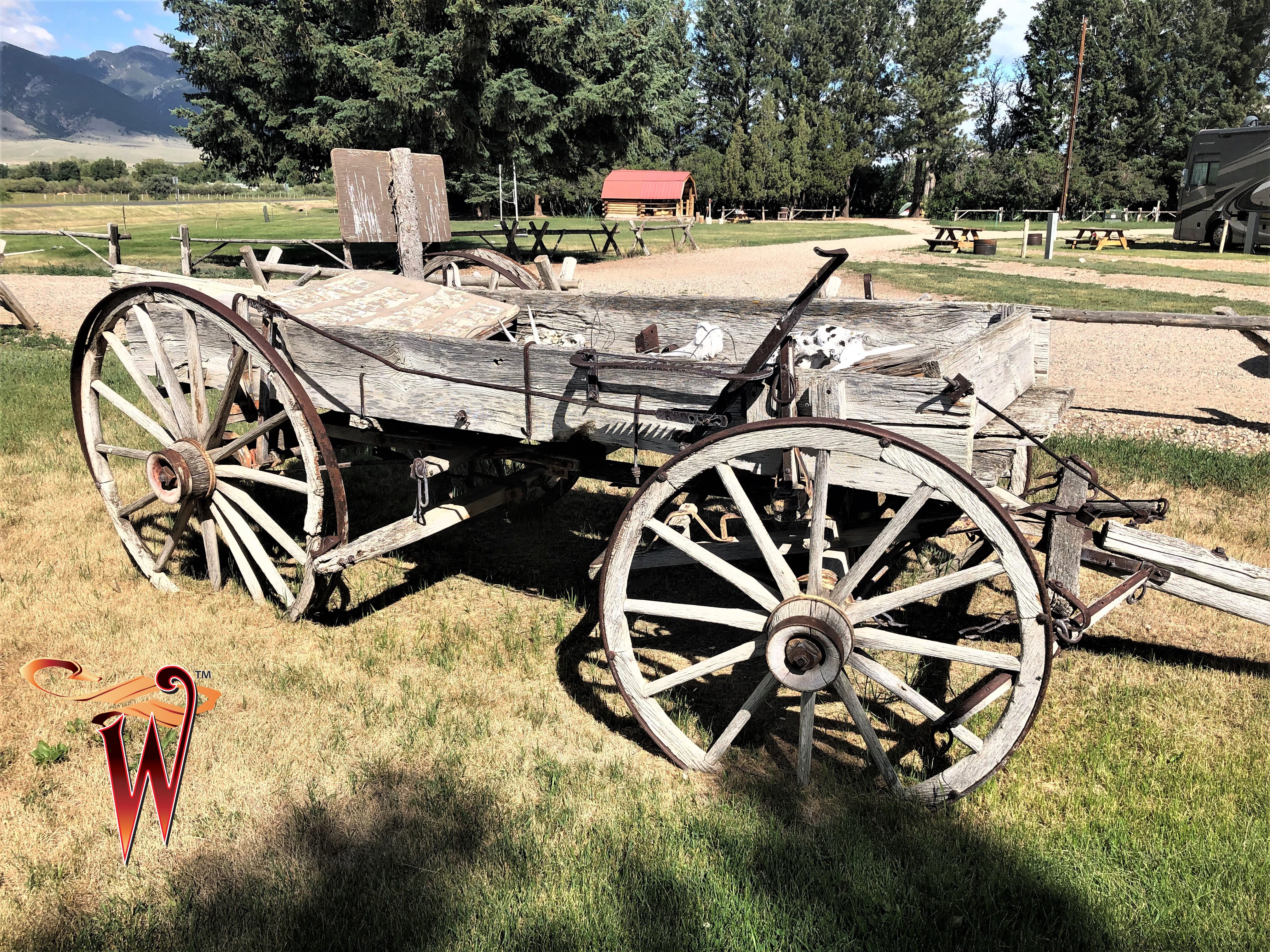
While traveling in the West, we came across this Mountain wagon with steel skeins and tire rivets. Can you name this major brand wagon?
A fifth reason that internet searching can be difficult is that details within this subject that are on the internet can often tucked away in deep rabbit holes of web searches. It can require a tremendous amount of experience as well as a healthy dose of luck and extreme patience to be successful. Understanding where and how to access the right information can take time, effort, and, in many cases, years to locate. If you tend to be an impatient person, this research process will send you packing in a hurry.
As a general rule, researchers get out of their searches what they put into them... or even less. I’ve spent years looking for some details and, then, just as I’m about to move on, it appears out of the blue. I’ve spent even longer waiting for other answers that may never be uncovered. Being vigilant during the process is important. I couldn’t tell you the number oftimes I’ve ran across remarkable facts while searching for something completely unrelated. Ultimately, the key to successful research is to never, ever stop looking, seeking, digging, and pursuing.
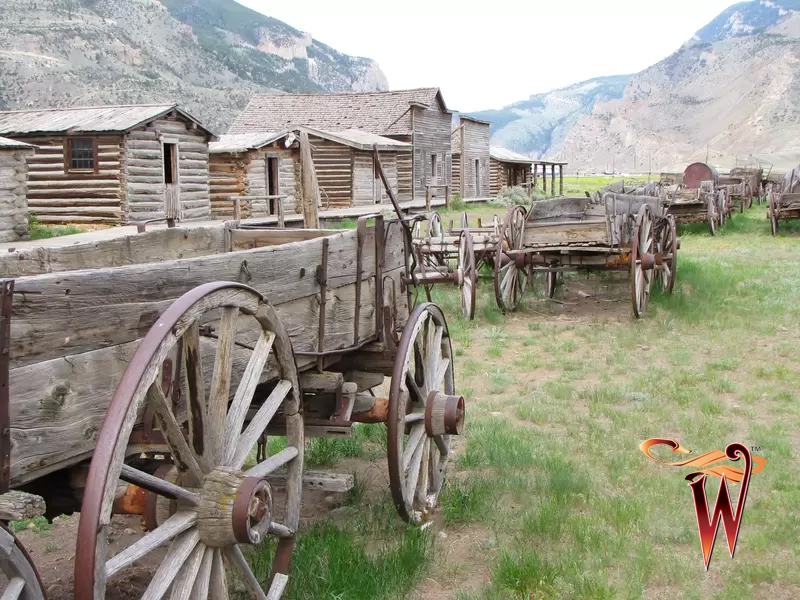
As of this writing, no examples of a legendary Murphy wagon are known to have survived.
Sixth, any research requires extreme caution since many of the answers supplied on-line have zero supporting documentation. Speculation and overconfident guesses fill countless pages of the world wide web. As a result, too often, one brand gets labeled as another and late period vehicles can get pigeon-holed to an unsubstantiated time. I see it over and over.
Seventh, many of the answers we look for will never be found sitting on the comfort of our couch. We have to go, see, do, and experience.One of the first things that happens when we go to different regions of thecountry is that we learn how different designs were used for different parts of the U.S. It’s very common to see wagons that were sold in flat country equipped with stiff tongues, cast skeins, lighter gear reinforcement, and no brakes. In contrast, when we visit the more rugged, mountainous terrain of the West, we’re more likely to run into wagons with steel skeins, heavier brake rollers, a variety of brake designs, and different types of reinforcement overall. Our level of experience with all parts of the country can help prevent misconceptions while simultaneously unveiling distinctions that can clear up anotherwise challenging subject.
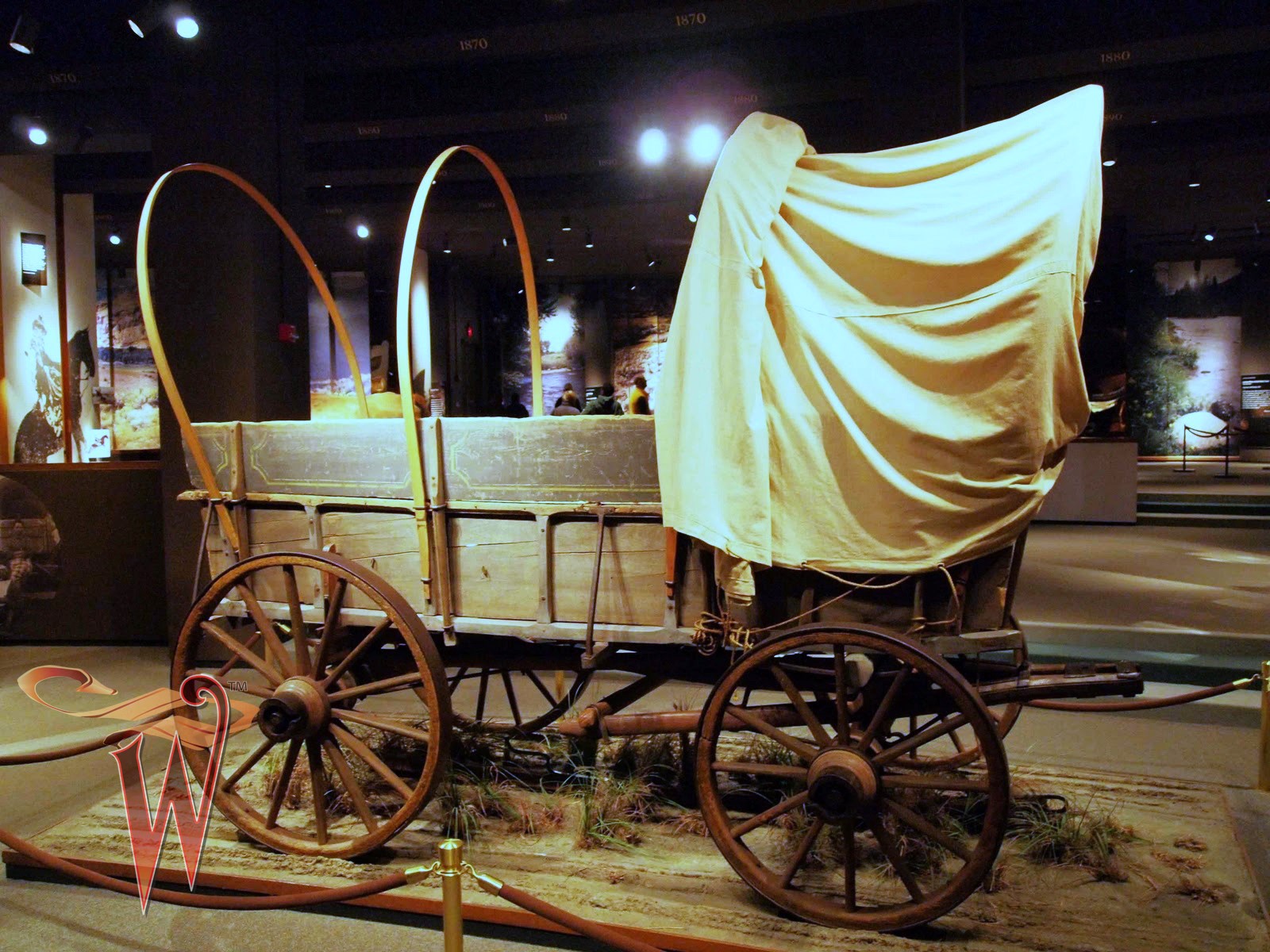
A rare example of an early emigrant wagon. While the maker is unknown, the wagon is an exceptional survivor. It can be seen at the Gateway Arch in St. Louis, Missouri.
Here's one, final point... accurate, supportable information has value, especially if it helps define and provide the personality to the vehicle you have. There’s a richness to the story of any vehicle and the more we can substantiate, the greater the potential desirability. I’ve seen the truth in this through numerous auctions and vehicle sales. A no-name, no-history, no-date, set of wheels can easily be construed as a common pile of old lumber with no real worth beyond that of yard art or an interesting restoration project. On the other hand, when a legendary brand with a story and timeframe is recognized - whatever the condition - it can capture everyone’s appreciation and imagination. I’ve seen those results at auctions as well. It’s just one of the reasons I try to assemble as much supportable background as possible on all the vehicles in our collection. So,the next time you run across an old running gear or complete wagon that ‘appears’ to have lost its identity, you may want to take a longer look. It could just be a long-lost piece of history that someone has been looking for!
Please Note: As with each of our blog writings, all imagery and text is copyrighted with All Rights Reserved. The material may not be broadcast, published, rewritten, or redistributed without prior written permission from David E. Sneed, Wheels That Won The West® Archives, LLC
